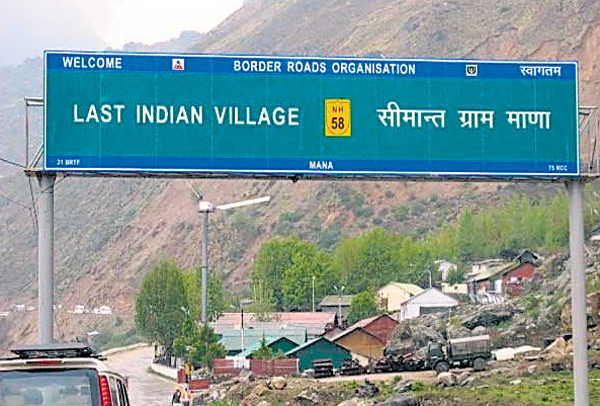Last U’khand village along China border goes to sleep
Arun Naithani
Tribune News Service
Mana (Chamoli), November 15
Otherwise a sleepy village along the India-China border in the hill state of Uttarakhand, Mana is abuzz with activity these days. Its inhabitants are packing up and getting ready to abandon the village by November 18.
Mana, touted as the last village along the China border in the state, is all set to go to sleep for the next six months. This exercise is repeated at the onset of winter each year.
Nestled 10,500 ft above the sea level in the rugged mountains, this Chamoli hamlet is snowed in during winter. Located just 3 km from the revered shrine of Badrinath, Mana’s life depends on pilgrimage. With the closure of the portals of the shrine, activities in the village, too, come to a halt and an eerie silence sets in during winter.
Days before leaving the village, all families attend a special pooja. “After the ritual, the village is left under the protection of local deity Ghantakaran. The villagers then leave for their other homes at warmer Gopeshwar, Pandukeshwar, Joshimath, etc,” says Vijay Singh Rawat, a villager.
The inter-college at the village too shifts to Pandukeshwar for the remainder of the session. And as soon as snowmelt begins in April, the village springs back to life as people return.
Mana has mythological importance in ancient scriptures, where it is referred to as Manibhadhrapuram. It is believed that Pandavas went through the village in their journey to “swarg” (paradise). According to the Indian mythology, Maharishi Ved Vyas narrated the Mahabharata at the village; and on the direction of Lord Brahma, Lord Ganesha wrote it down. Besides remnants of the Mahabharata-era Vyas and Ganesha caves, origin point of the Saraswati river and 140-metre-high Vasudhara waterfall are the main tourist attractions here.
Two mountainous caves and ancient scriptures engraved on the rocks leave tourists mesmerised. A “Bharat ki akhiri dukan” (the last shop of India) board at a tea-stall makes for a nice spot to get clicked.
At one point, Mana used to be the main centre of the India-Tibet trade, which ended after China’s annexation. It is believed that many villagers had assets in Tibet and a route led to Kailash Mansarovar from the village.
Mana residents are engaged in the trade of herbs, Pashmina, blankets, woollens, carpets, etc. Unlike other border villages, Mana is well-developed, courtesy various government schemes.










